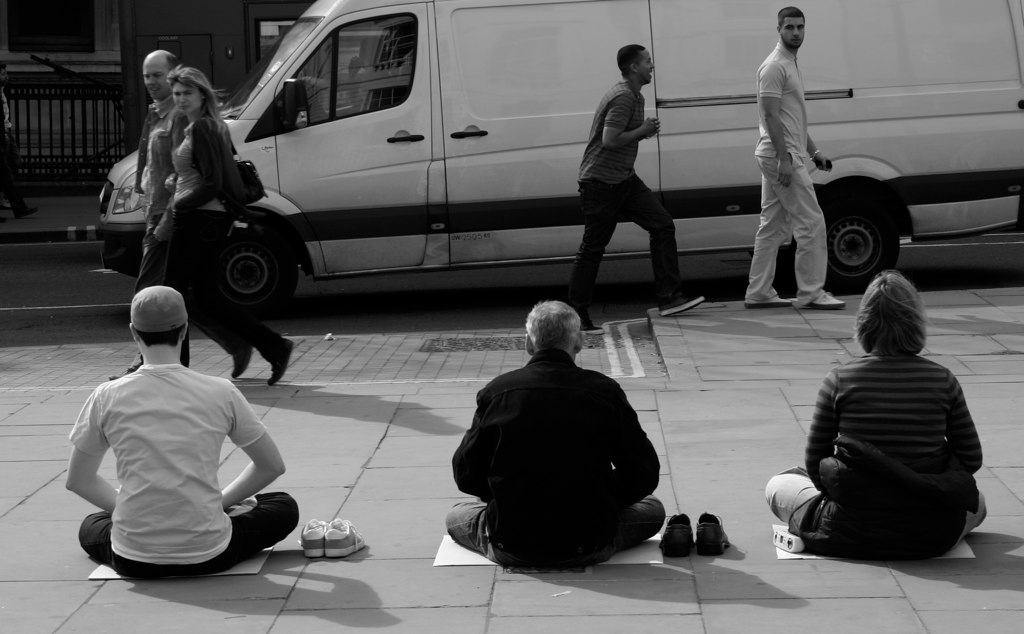I wrote this as an email to a friend who’d taken an interest, but I thought it might be valuable to y’all as well. This is a super-simplification of the meditation practice, but will hopefully clear up some misconceptions. I’m happy to teach and learn if anyone would like to follow up (I’m no expert for sure, but I do a lot of reading about this stuff).
==
I won’t er…evangelize but only to say that the practice of meditation and being able to build some room between external actions and my internal automatic reactions to them has given me so much internal freedom and more choices on how to respond in any given moment.
Anyway, in simplest terms, meditation is the act of bringing your attention to one thing, and by doing so, changing your mindstate from actor to observer. In this way, any thoughts or emotions that may come up get to be treated not as the reality of the situation but merely as interesting things passing through your field of consciousness.

This may sound a little woo-woo, but there’s ever increasing scientific evidence to demonstrate that this act builds our brains center for compassion, resourcefulness and positive mind states.
Anyway, the simplest way I can explain the ‘how’ is this:
1. Sit somewhere comfortable but not too comfortable (you will need to be sitting relatively straight…or more specifically, owning the behavior of sitting rather than sinking into a comfy couch or something). Tradition says to use a zufi which is basically a big pillow that you put on the floor… I usually do it sitting up on my bed. Ideally this would be done somewhere near nature (plants, running water, in a park) rather than somewhere filled with electronics. Also, quiet is important.
2. Set a timer (when I started, it was a challenge to go a full minute… your mileage may vary… its important to not beat yourself up if you find it challenging at first…its like building a muscle) for two to three minutes (again,its okay if you don’t make it this far…the important thing is that your mind doesn’t have to concentrate on how much time has passed, when you know there is going to be a timer beeping or chiming at a certain point)
3. Relax. Close your eyes. Put your hands on your thighs, relax them. Breathe in slowly through your nose, and out through your mouth (Again, not required, just helps you with tempo). Bring your attention to your breath. Feel the air coming into your nose, filling up your lungs, then out through your mouth. With each exhale, release some of the tension in your muscles.
4. Here’s the important one. The goal of meditation is NOT to ‘clear your mind’ or to ‘stop you from thinking’. The thoughts in your head are not under your control…they are automatically generated, and happen whether you want them to or not.  The goal is to bring your focus to your breath each time you find yourself ‘thinking’. Don’t beat yourself up for drifting, just bring yourself back to focusing on your breath each time it happens. This will be hard and seem weird at first, but it does get easier the more you do it.
…and that’s really the very very basics.
For further reading, the book that first got me into meditation and mindfulness is called Radical Acceptance and its by Tara Brach. It’s relatively light on the woo-woo crystals-and-light stuff, but really frames the practice in er…practical terms and is very compassionate to what peple might be struggling with. She also has an awesome podcast at http://www.tarabrach.com/ which is free to download.
Additionally, theres a site called Audio Dharma at audiodharma.org that has both talks and guided meditations (which is where instead of purely focusing on breathing, you listen to someone guiding you throuhgh your meditation, encouraging you to relax, giving you things to visualize. it’s a different experience and might be useful to you if that’s the kind of person you are.
Anyway, all the best to you.
-Jeremy
Related articles
 Easy Steps to Follow on How to Meditate for Beginners(neomeditations.com)
Easy Steps to Follow on How to Meditate for Beginners(neomeditations.com)
 Vipassana (mindfulness) meditation(beyondmeds.com)
Vipassana (mindfulness) meditation(beyondmeds.com)
 Simply stay in your own place(zenflash.wordpress.com)
Simply stay in your own place(zenflash.wordpress.com)










Very nice article. I especially liked this line: being able to build some room between external actions and my internal automatic reactionsto them has given me so much internal freedom and more choices on how to respond in any given moment.
Very nice idea also to set a timer so as not to meditate on what time it is!
Also liked how you talked about owning the sitting.